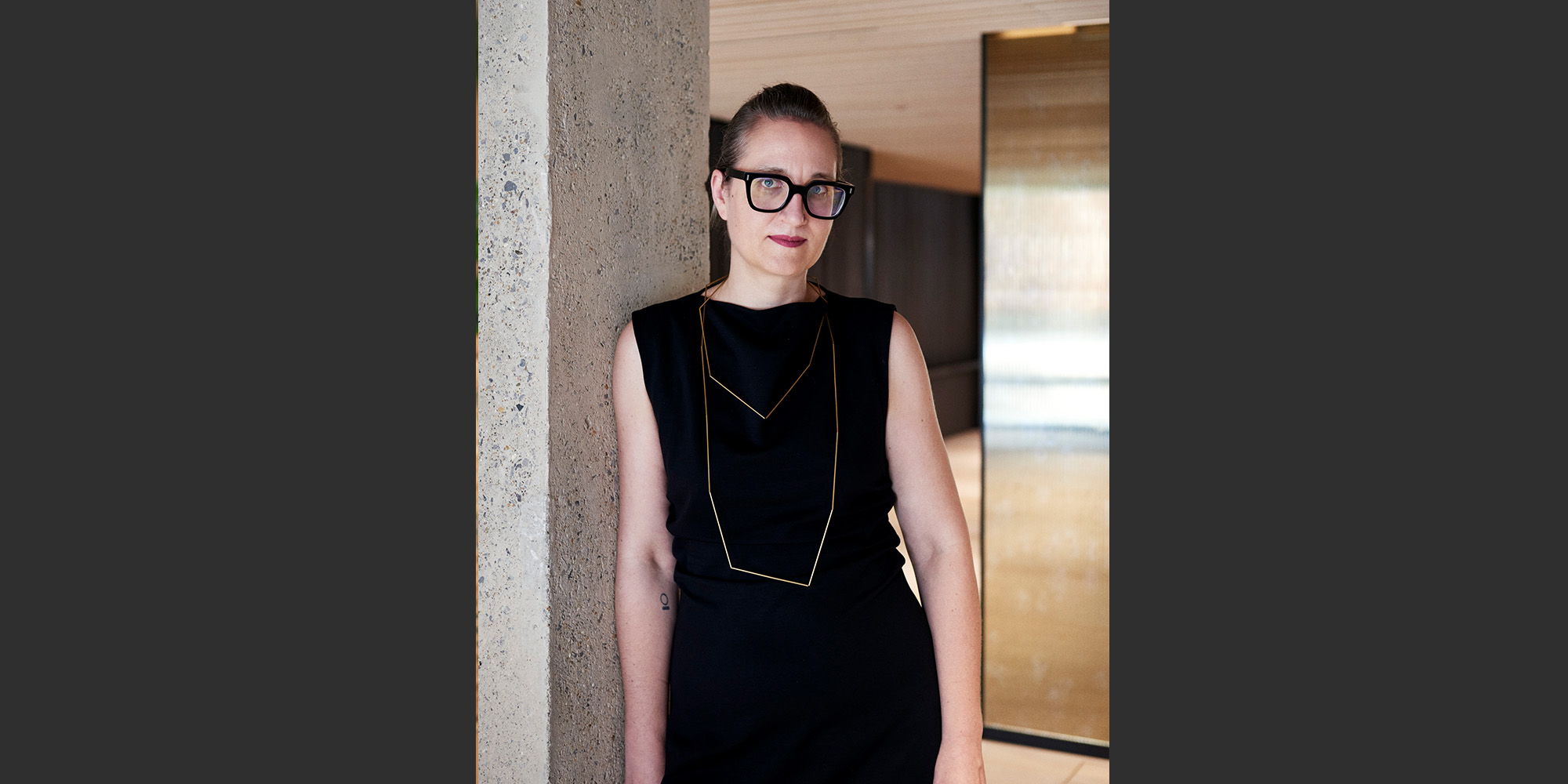Welcome to Fublis’ “Media Matters,” a dedicated series where we delve into the experiences and insights of media professionals, including journalists, editors, writers, and other key figures shaping the industry.
In this edition, we sit down with Reyyan Dogan, an architectural journalist and content creator whose journey from architecture to journalism provides a unique lens on the role of storytelling in the built environment. Reyyan’s work spans across notable projects at Parametric Architecture, where she contributed to PA’s first printed book Future[tectonics] and gained in-depth experience through editorial management, writing, and social media. Her diverse background, including contributions to Rethinking the Future and a graduate program in Alternative Architectural Practices, reflects her interdisciplinary approach that merges architecture, sociology, and journalism.
In this interview, Reyyan shares her thoughts on environmental conscious design, the challenges of communicating complex ideas to a broader audience, and the evolving role of architectural journalism in public discourse.
Join us as we explore her career, motivations, and invaluable advice for young architects interested in the intersection of architecture and media.
Can you share some of the key projects you worked on during your time at Parametric Architecture, and what you learned from them?
Reyyan Dogan: Starting as a freelance writer at Parametric Architecture and then becoming a content creator, the experience provided me with a new perspective, especially on how technology evolves the practice. Working with various writers, editing PATalks interviews, and managing social media offered a comprehensive experience in journalism for me and was very dynamic. With my background in editorial assistance, one of my key projects was contributing PA’s first printed book, Future[tectonics], which featured insightful articles from authors around the world. Additionally, being responsible for news articles and publishing previously unpublished projects was very exciting.
What motivated you to shift from architectural practice to pursuing opportunities in the editorial field?
Reyyan Dogan: During my Bachelor’s studies, my favorite part of the project process was researching and storytelling the progress. I realized that what I wanted to involve was more in research and writing rather than in actually building new structures in over-built cities. As I began my Master’s program right after graduation, I started exploring the potential of writing further. Given that the architecture is changing and closely integrated with human experience and environment, I observed the ongoing discussions in practice regarding its contributions to various fields, its impact on the changing environment, and its role in addressing the problems it creates. Writing about these complex yet exciting subjects allowed me to delve into the editorial field of architecture, fueling my passion to contribute, write, collect diverse perspectives, and share with those who may be seeking them.
How did your experience at Rethinking the future shape your views on architectural and urbanism?
Reyyan Dogan: Being my first step into architectural journalism, Rethinking the Future provided me with the fundamental principles of writing for an online platform. During my time as a freelance writer, I had the opportunity to explore and write about various cities around the world. Researching local architectural offices, projects, and websites enriched my understanding of how diverse cities have evolved and shaped themselves.
In your view, what are the most pressing challenges and opportunities in environmental conscious design today. How do you see your role in addressing these challenges?
Reyyan Dogan: As we face multiple global crises, architecture, like many other disciplines, is undergoing significant transformations, and being one of the major contributors to environmental crisis, environmental conscious design has become a central topic in contemporary discussions.
The increasing globalization of the world can be counted both as a challenge and an opportunity. It leads to more complex infrastructures and networks, with many problematic outcomes while providing a beneficial service, in the practice while also makes sharing the potential solutions for similar challenges easier. In Biennale Architecture 2025, Carlo Ratti addresses local ingenuity and says; “If every country brings one success to the table, together we can assemble a global kit for adapting to the future.” Similarly in this context the role of architectural journalism can also be seen as a collector, of perspectives and successes together to help shaping a better future.
How does your degree in sociology complement your work interest in architectural practice? What unique perspectives do you believe sociology brings to your understanding of architecture and urban environments?
Reyyan Dogan: Architecture is not slightly a separate thing from humans, it is actually for humans’ fundamental necessities. Observing cities overbuilt with structures driven more by economic factors than by spatial needs has led me to explore the genuine connection between buildings and the communities and cultures they serve. My ongoing study in sociology has broadened my perspective on architecture, enabling me to look beyond the surface of a building and search for the decisions’ reasons, human relations, and stories behind it. By examining social behaviors, cultural norms, and community dynamics, sociology helps to comprehend how architectural design can influence and be influenced by human activity. It is possible to see the marks of culture on the built environment and social identities of buildings. It helps reveal the impact of urban planning and architectural decisions on social issues such as segregation, gentrification, and access to resources, and provides a more nuanced understanding of the reciprocal role of architecture in shaping human experiences and human experiences in shaping architecture.
Could you briefly describe ‘alternative architectural practices’ and how they have crafted you?
Reyyan Dogan: Alternative Architectural Practices is a graduate program that emerged in search of answers to the current crises in architectural practice. The program is shaped around a different theme every year, and the topic I worked on was “waste”. Unlike other master’s programs in Turkey, this program emphasizes collaborative study until the thesis process and hands-on experiences as a result, culminating in the publication of a research book on the topic among with a real-life built project. This experience marked my first contribution as an editor. In addition to the research, project, and publication insights, concept of alternative architectural practices has significantly influenced my career path. The discussions during the courses, especially on current debates, showed me there are multiple ways to pursue architectural practice. Unlike traditional, building-focused architectural education, this program introduced me to possibilities beyond conventional architecture and how to integrate my architectural background with broader investigative approaches. It has allowed me to explore and address surrounding conditions and opportunities without drawing a strict line between my editorial goals and architectural interests.
As a fellow from a strong research background, how do you see the role of architectural journalism in shaping public discourse around architecture and urbanism?
Reyyan Dogan: It may seem repetitive, but I think the most critical and important role of architectural journalism, especially in these times when we are struggling with many crises, is to support the dissemination of different perspectives, solutions and information. Not only critical evaluations and discussions, but also an objective publication of an inspiring project can trigger completely different ideas in completely different parts of the world, which I find very valuable in an interconnected world. Well-researched articles, critiques, and analyses provide detailed information about a certain subject while also takes reader to a journey of different compilation of they seek for and can trigger unexpected realizations and actions.
What challenges do you face in communicating complex architectural ideas to a broader audience through journalism?
Reyyan Dogan: For me the most significant challenge—and also the most exciting aspect—in addressing architectural discourses is maintaining relevance amidst an ever-evolving field with ongoing research and learning. Also, the importance of presenting complex architectural ideas in a reader-friendly manner can sometimes be a challenge. In such cases, I try to internalize the subject deeply and present it again as a critical point. In brief, I think that staying up-to-date and conveying information and discourse in a reader-friendly language is critical and sometimes challenging.
In your opinion, how can architectural journalism bridge the gap between technical expertise and public understanding?
Reyyan Dogan: Architectural publications, which once was our first resource to understand a project during our Bachelor’s studies, can serve both as a valuable source of public feedback for technical expertise and as introductions of projects that tell their stories of design for public. They can introduce newly emerged approaches that are beneficial to the practice, highlight critical issues and underscore what architecture must address in terms of serving both users and the environment, while keeping practice current and relevant to the public.
How do you plan to integrate your research methodologies into your future career?
Reyyan Dogan: My Master’s degree studies, including publishing a book and completing my thesis, made significant contributions to my writing skills by teaching me how to establish a solid research foundation. I believe that creating an outline for each piece of writing, whether it’s a blog post, a publication article, or an academic paper, is a crucial and foundational step in the process. I prefer to conduct extensive research and incorporate a wide range of resources into articles to compile comprehensive information and offer a meaningful journey by taking readers into different writings and I think this will continue as I continue to write.
What advice would you give to young architects and designers who are interested in exploring the intersections of architecture and journalism?
Reyyan Dogan: This experience that started as one of the paths for me, continues as a journey that I realized I enjoyed and passionate about, not a crossroads after architecture. Maybe not an advice but I can encourage everyone interested in this field to embrace the opportunities and view them not as a drastic career change but as a chance to try something fresh with what they trained for. As I continue to gain experiences and perspectives, I’ve come to understand that there’s no single path or title that follows a comprehensive architecture education. I hope this can help new graduates and students who may be feeling anxious about the future.




